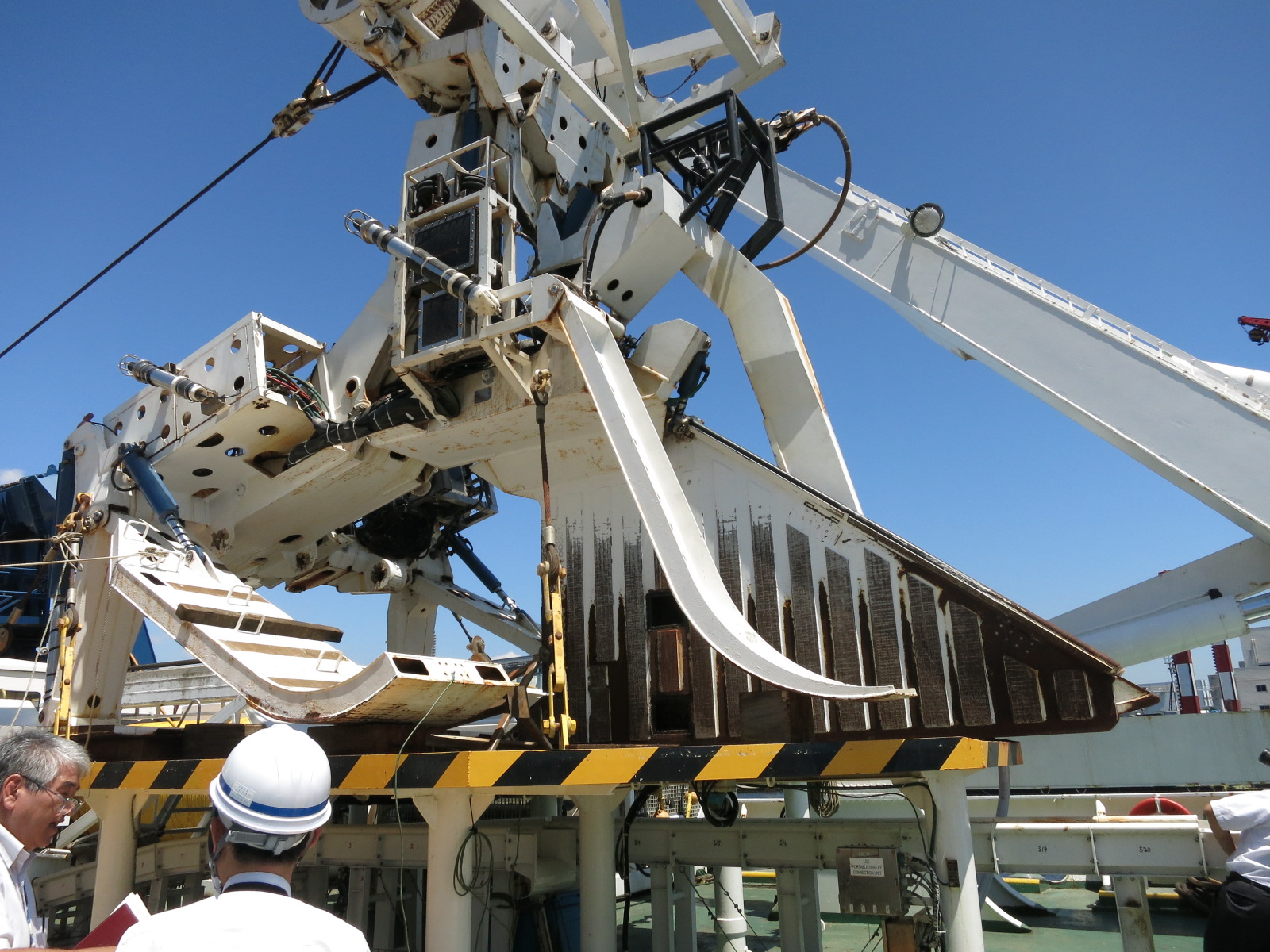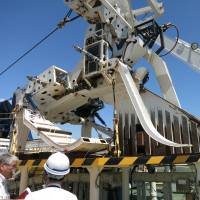Many people are probably unaware that the Internet used everyday to connect to content and people around the world is supported by undersea optical cable.
On Thursday, NTT World Engineering Marine Corp. gave a rare media tour of the ship it uses to lay those cables around the world.
With the 124-meter-long Subaru in port at Yokohama, the firm invited reporters to explain what it does and show off the ship's features, including a robot cable layer and systems to study submarine geography, or the shape and structure of the seafloor.
The laying process involves checking submarine geography to avoid steep rises and falls, and then calculating tide movements and the trajectory of the falling cables in relation to ship speed, the firm said. Only then are the cables laid and buried by the Subaru, which was built in 2000.
The cables, encased in sheaths of rolled metal, are laid and buried deep — at an average of 1,000-1,500 meters below the sea surface — so as not to interfere with fishing vessels. However, the Subaru can lay cables much deeper at 8,000 meters below the waves.
NTT World Engineering Marine, owned by NTT Communications, said it carried out cable laying and maintenance around Japan for NTT group firms, but also provided services to overseas customers to build global submarine Internet infrastructure.
It takes about seven to 10 days to complete work around Japan, while overseas jobs can take as long as six weeks, the firm said.




















With your current subscription plan you can comment on stories. However, before writing your first comment, please create a display name in the Profile section of your subscriber account page.